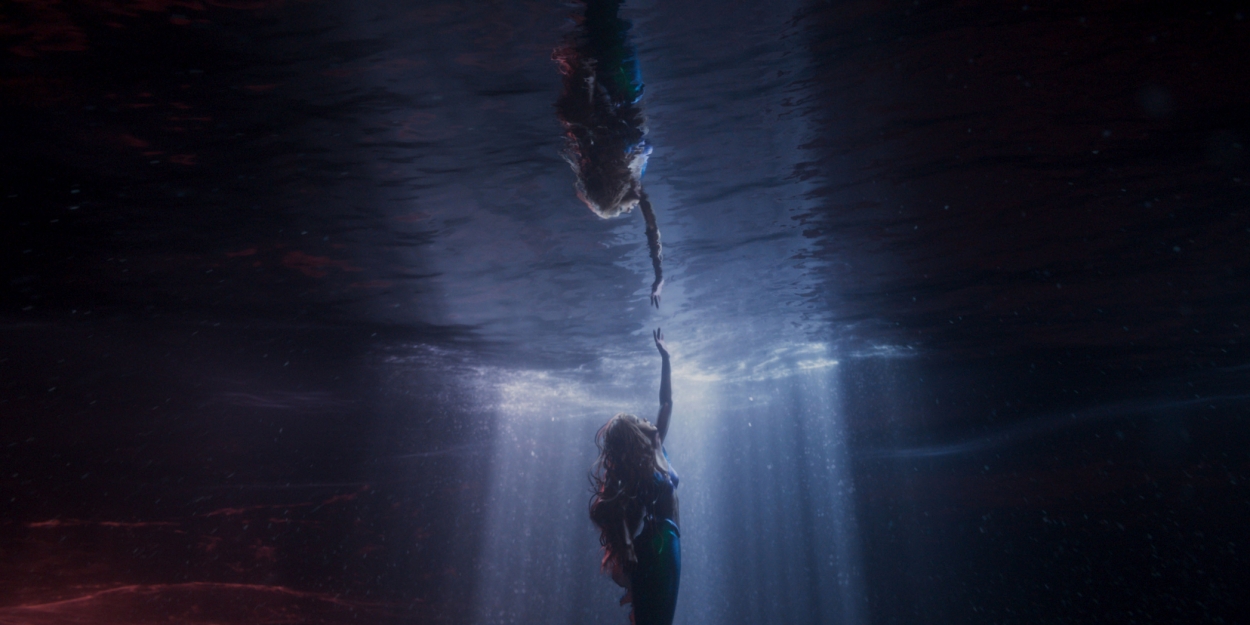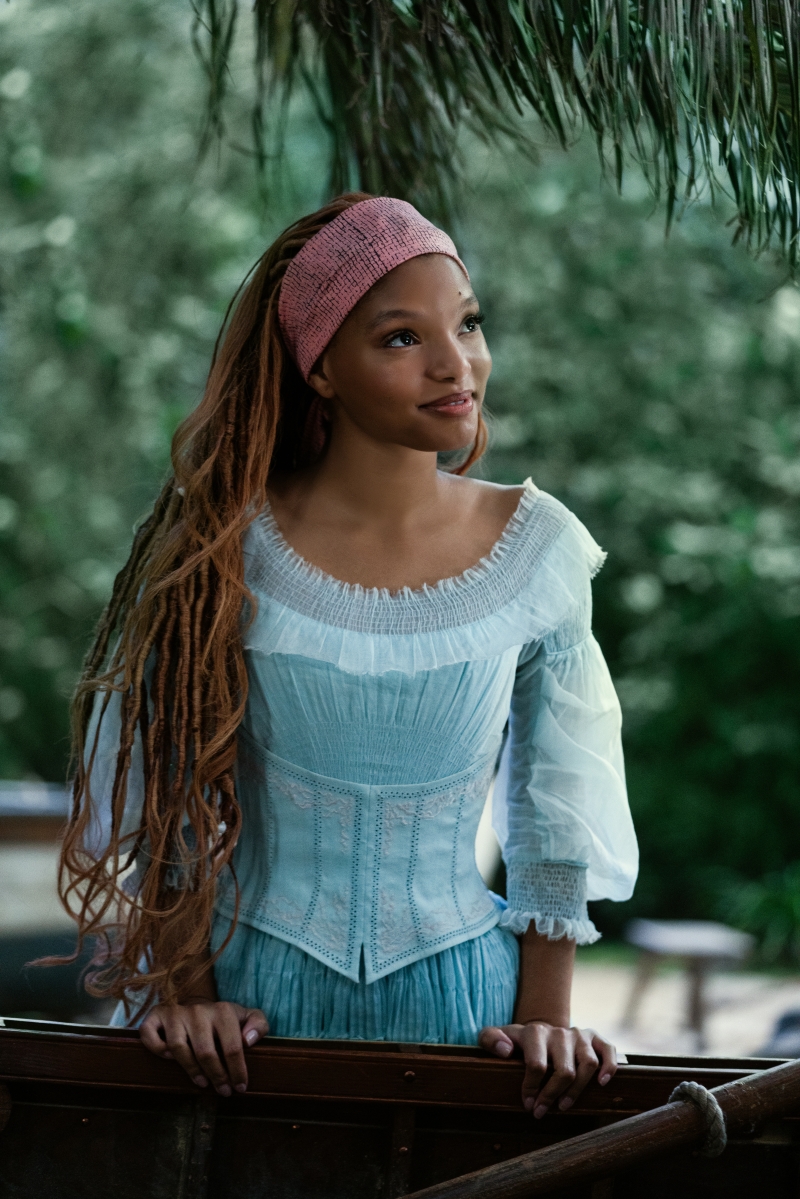How Rob Marshall's Theatre Background Brought THE LITTLE MERMAID to Life
The Little Mermaid swims into theaters on May 26.

Disney's new live action remake of The Little Mermaid opens with a quote from Hans-Christian Anderson's original fairy tale, stating: "A mermaid has no tears, therefore she suffers so much more."
The quote spoke to the film's director, Rob Marshall, who had set his sights on creating a much deeper reimagining of the classic animated film.
"The idea that a mermaid has no tears and she feels more, she suffers more, it felt like, to us, that it set the table for this more emotional telling of the story," said Marshall.
In order to achieve this, Marshall put his star-studded cast through an extensive three-month rehearsal process, with the voice-over actors participating in a rare work session.
"It's something that I always do. Obviously, I come from the theatre. We all come from the theatre, so there is a process that I think you have to do. Musicals are a hybrid, in a funny way. Movie musicals are a hybrid of theatre and film because you can't just walk in and start singing. You have to learn where the choreography is. It's all part of it," Marshall stated.
After performing in Broadway musicals like The Rink, The Mystery of Edwin Drood, and Cats, Rob Marshall received ciritcal acclaim for directing the 2002 film adaptation of Chicago. Since then, he has helmed movie musicals like Into the Woods, Mary Poppins Returns, and Nine.
 Noma Dumezweni, who was seen on Broadway in Harry Potter & the Cursed Child, felt particularly welcomed by Marshall as she took on the new role of Queen Selina.
Noma Dumezweni, who was seen on Broadway in Harry Potter & the Cursed Child, felt particularly welcomed by Marshall as she took on the new role of Queen Selina.
"The thing that I've absolutely clocked with Rob and [producer John DeLuca] is that they're theatre babies. Growing through the theatre. And for me, having a rehearsal on set is such a rare thing when I'm moving into the TV and film world. It's such a joy to be able to go, 'This is what we're aiming for,' so we know it and then we can be free when we're doing it," Dumezweni shared.
In an effort to dig deeper into their CGI-animated sea creatures, Tony-winning Hamilton star Daveed Diggs, Jacob Tremblay, and Awkwafina took part in a video reference shoot for their characters' dialogue and movement.
"Usually, you're in the booth and a lot of the times the directors just read with you but we were all there to do it and yeah, it all happened there. There were other people in the room, too. It was pretty crazy. That one day was were our performances came from," says comedienne Awkwafina, who voices Scuttle, the gossipy seagull.
Six cameras recorded their performances on a stage in the round, while live action stars Halle Bailey, Jonah Hauer-King, and Javier Bardem were present off-screen to assist them. They were joined by several puppets and puppeteers standing in to play other characters.
The puppeteers interacted with the cast on set while they re-enacted the story. The work session allowed them to explore their characters on a physical level, also helping animators with lighting references and musical number timing. Their movements helped give guidance as to how their characters could be animated into a scene.
"I think in general, the way we worked on it, and this is why I think it's good, is that it wasn't big. We worked on it like it was a small thing," said Diggs, who was able to play with his vocal performance as Sebastian while he walked around with puppeteers that were holding crabs on sticks..jpg)
"Especially in that work session, it kind of felt like we were doing community theatre. They were pushing boxes around to make sets. We got in this groove. That's how you make art. We made something we understood, that everybody could wrap their arms around, that we all believed in and knew inside and out," Diggs says.
Additionally, the film's three month rehearsal period allowed actors like Halle Bailey, Melissa McCarthy, and Javier Bardem to lay the groundwork for their performances before venturing into the complicated world of CGI.
"With this movie, we didn't want the technical aspects of the film to lead it," Marshall said. "We started on our feet, on the floor, but then we put them up in the air."
"We always rehearse, but in this film, it was crucial to know exactly what everyone was doing," said Marshall's frequent collaborator John DeLuca.

While the underwater scenes were not shot in the water, Marshall used a filmmaking technique called "Dry-for-Wet." Using a blue screen environment, the actors were hung from a series of rigs that included wires, teeter-totters, and tuning forks. They were then hooked into a harness that had a counterweight on the backside to simulate underwater movement as they filmed.
"Sometimes I would say 'action.' They would say two lines. I would say 'cut.' Then we would put them on another apparatus, put them on wires, and then go 'action.' And then one line, 'cut.' It was like a mosaic," Marshall continued.
"I was never literally on my feet," McCarthy, who plays evil sea witch diva Ursula, stated. "We were up in rigs or all different magical things. If you were diving it was one rig, if you were spinning it was another. Never on the ground. There's an amazing team of dancers and stunt doubles that kind of were our fins or feet. Each person had it's team for this wonderful, glorious ensemble."
Of course, The Little Mermaid would not be complete without Alan Menken and Howard Ashman's iconic songs, which include "Part of Your World," "Under the Sea," and "Poor Unfortunate Souls," to name a few.
"We had our recording sessions and then [Rob] allowed me to see the movie when it was just first put together and when we got to 'Part of Your World,' I was just weeping. Part of it is missing Howard [Ashman] and also remembering the innocence of what we put in there originally and now look at it," Menken shared.
While working on the original Little Mermaid in 1988, Menken's songwriting partner Howard Ashman was diagnosed with HIV/AIDS, tragically passing away in 1991. With Ashman no longer around to collaborate on new music for the film, Menken enlisted a life-long fan of them both to contribute new music to the film: Lin-Manuel Miranda.
"Rob and John, David MacGee, Lin-Manuel Miranda and me got together and we went through how the story is being adapted by David and how the structure is and where are the potential spots," Menken said. "Those decisions are made, first of all, by character but also by the sequence of a score, what's needed."
Miranda and Menken's collaboration resulted in new songs written especially for the new film, including "Wild Uncharted Waters," "For the First Time," and "The Scuttlebutt," which particularly makes a splash in the film.
"'The Scuttlebutt,' that's the prize gift of it. I gave him this Caribbean tune and Lin sort of did a rap over it that was so perfect, used the music, but it had this rhythmic pulse to it. It was just pure Lin-Manuel Miranda," Menken shares of the song.
Menken made sure that each new song had a deserved place in the film, ensuring that each new song that was placed into the film has a justified cause.
"We're constructing a very delicate organism. As you write a musical for the stage, you're writing something with actors coming and going and with different designers coming in and different theaters and an associate director and whatever it is. You have to construct something that is going to be strong enough to be able to be moved around and still hold its shape. So a lot of it is in the structure. Rob coming out of musical theatre knows that structure so well," Menken shared.
 "Musicals are very tricky. We talk about this all the time. It's a fine line. It's a balancing act. You could go off the rails and it's Saturday Night Live in two seconds. When someone starts to sing, it's either completely organic and it's earned or it's that moment of, 'Ooh, they're singing and it's weird,'" Marshall concluded.
"Musicals are very tricky. We talk about this all the time. It's a fine line. It's a balancing act. You could go off the rails and it's Saturday Night Live in two seconds. When someone starts to sing, it's either completely organic and it's earned or it's that moment of, 'Ooh, they're singing and it's weird,'" Marshall concluded.
The cast rehearsed the new music for weeks before heading into the studio to record with a 100-piece orchestra made up mostly of London Philharmonic members.
"It's horrendous to have to sing in a film with a Grammy-nominated artist. That's not fun for anyone," Jonah Hauer-King joked about recording his vocal tracks as Prince Eric alongside Halle Bailey's Ariel.
At the center of the film, Bailey spreads her wings (and fins) as Ariel, marking the 23-year-old Grammy nominee's first major film role.
"She's completely adorable, she's so talented, you can take your eyes off her. The emotion is just right there on her face and in her voice. She's just Halle Bailey. She's a delicious person and she's an amazing Ariel," Menken shared.
emotion is just right there on her face and in her voice. She's just Halle Bailey. She's a delicious person and she's an amazing Ariel," Menken shared.
"It's been five years of my life now. From 18 to 23, so those are very intense, transformative years as you're developing as a young woman but I feel like, especially the themes of this film of what Ariel had to go through with her passion and her drive and speaking up for herself and even though it may be scary, she went for it," Bailey shared.
While the film was worked on for five years prior to its release, highly positive early responses and a projected $110 million opening weekend at the box office is prompting it to became another timeless addition to Disney's catalogue, lingering as part of our world for years to come.
Watch the trailer for The Little Mermaid here:
Videos


